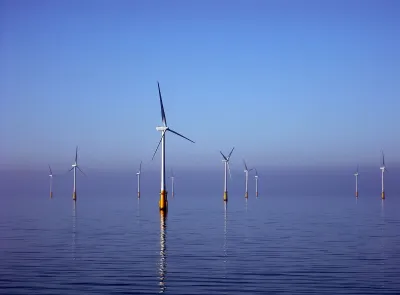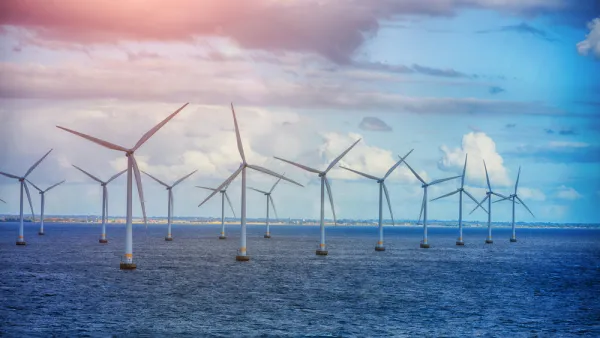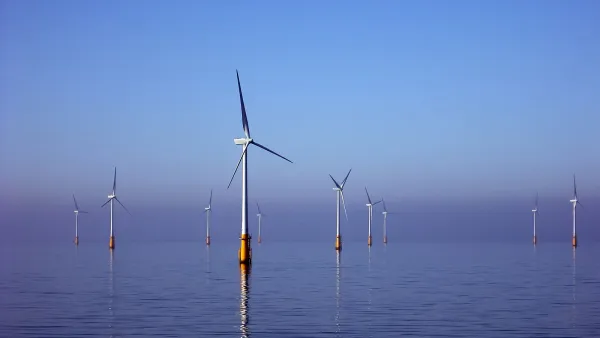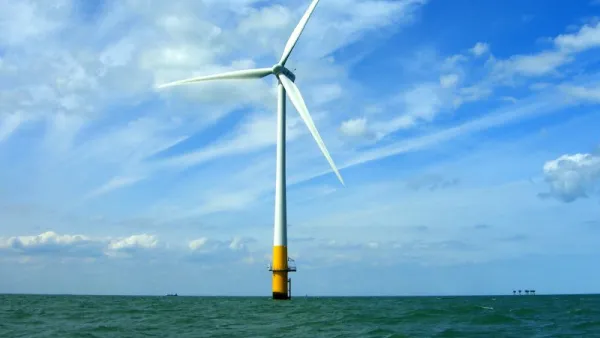Unique geography and high costs have stymied offshore wind energy production in California, but new incentives and innovations could soon make it more accessible.

Writing in the OC Register, Brooke Staggs describes the potential of offshore wind energy in the United States and, specifically, California, where offshore wind production has been held back by geography, among other factors.
“But with wind power now seen as key to helping both California and the U.S. meet their clean energy goals, new state and federal programs are focused on helping us push past those obstacles and become a leader in the offshore wind front,” Staggs writes. “In August, the California Energy Commission set goals of installing offshore wind projects that could generate 2,000 to 5,000 megawatts by 2030 and 25,000 megawatts by 2045. That would be enough electricity to power 3.75 million homes over the next seven years and 25 million homes by mid-century.”
The article describes the challenges of installing offshore wind turbines in the deep waters off the California coast, which require floating installations rather than turbines anchored to the sea floor, making it more expensive. California’s situation is complicated by the vast amounts of coastline controlled by the Department of Defense, which are currently off limits to wind energy projects. But with technology rapidly improving and incentives from the federal government adding a boost, offshore wind energy along the West Coast could soon be a reality. “[T]wo areas off the coast of Humboldt and three areas near Morro Bay, totalling a combined 373,000 acres, have so far been identified as prime floating wind farm locations. If fully developed, the projects could generate 4,500 megawatts of electricity, or enough power for 1.5 million homes.”
FULL STORY: Floating wind turbines off California coast soon could boost power grid

National Parks Layoffs Will Cause Communities to Lose Billions
Thousands of essential park workers were laid off this week, just before the busy spring break season.

Retro-silient?: America’s First “Eco-burb,” The Woodlands Turns 50
A master-planned community north of Houston offers lessons on green infrastructure and resilient design, but falls short of its founder’s lofty affordability and walkability goals.

Delivering for America Plan Will Downgrade Mail Service in at Least 49.5 Percent of Zip Codes
Republican and Democrat lawmakers criticize the plan for its disproportionate negative impact on rural communities.

Test News Post 1
This is a summary

Test News Headline 46
Test for the image on the front page.

Balancing Bombs and Butterflies: How the National Guard Protects a Rare Species
The National Guard at Fort Indiantown Gap uses GIS technology and land management strategies to balance military training with conservation efforts, ensuring the survival of the rare eastern regal fritillary butterfly.
Urban Design for Planners 1: Software Tools
This six-course series explores essential urban design concepts using open source software and equips planners with the tools they need to participate fully in the urban design process.
Planning for Universal Design
Learn the tools for implementing Universal Design in planning regulations.
EMC Planning Group, Inc.
Planetizen
Planetizen
Mpact (formerly Rail~Volution)
Great Falls Development Authority, Inc.
HUDs Office of Policy Development and Research
NYU Wagner Graduate School of Public Service





























